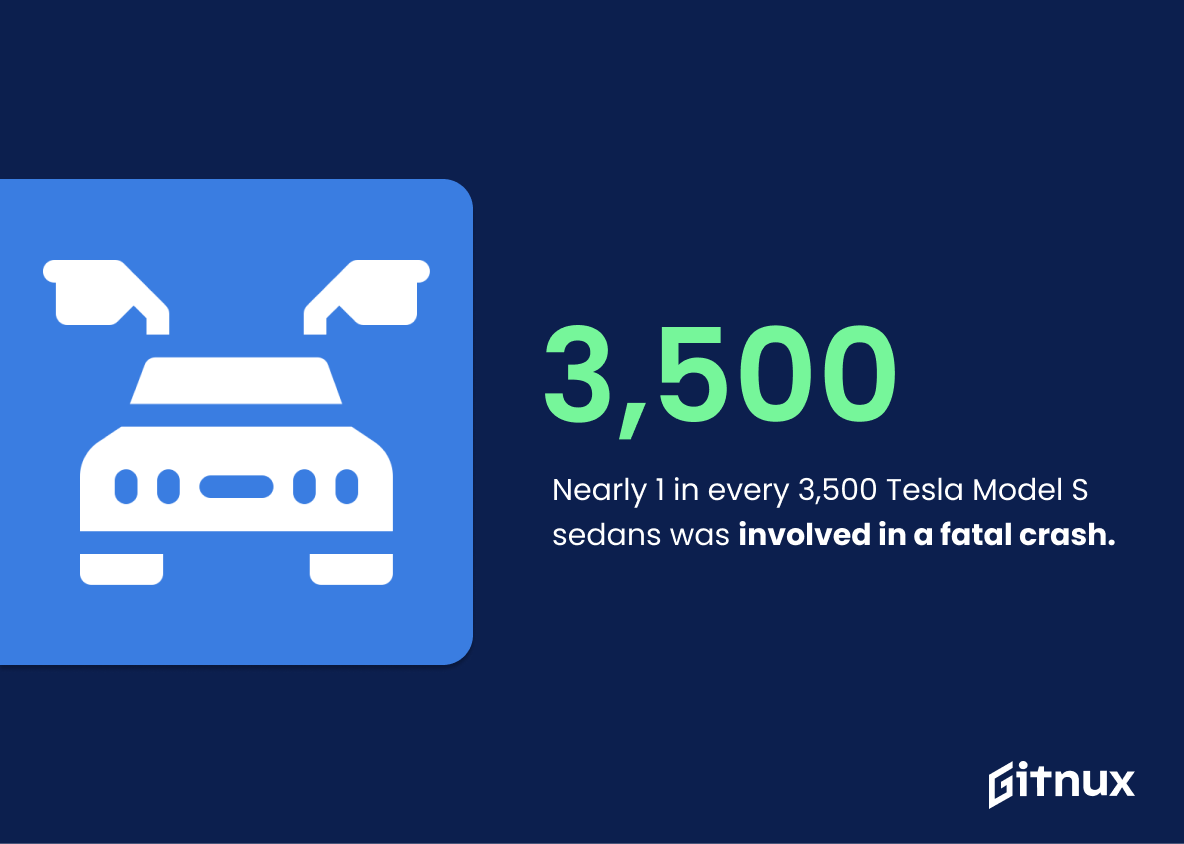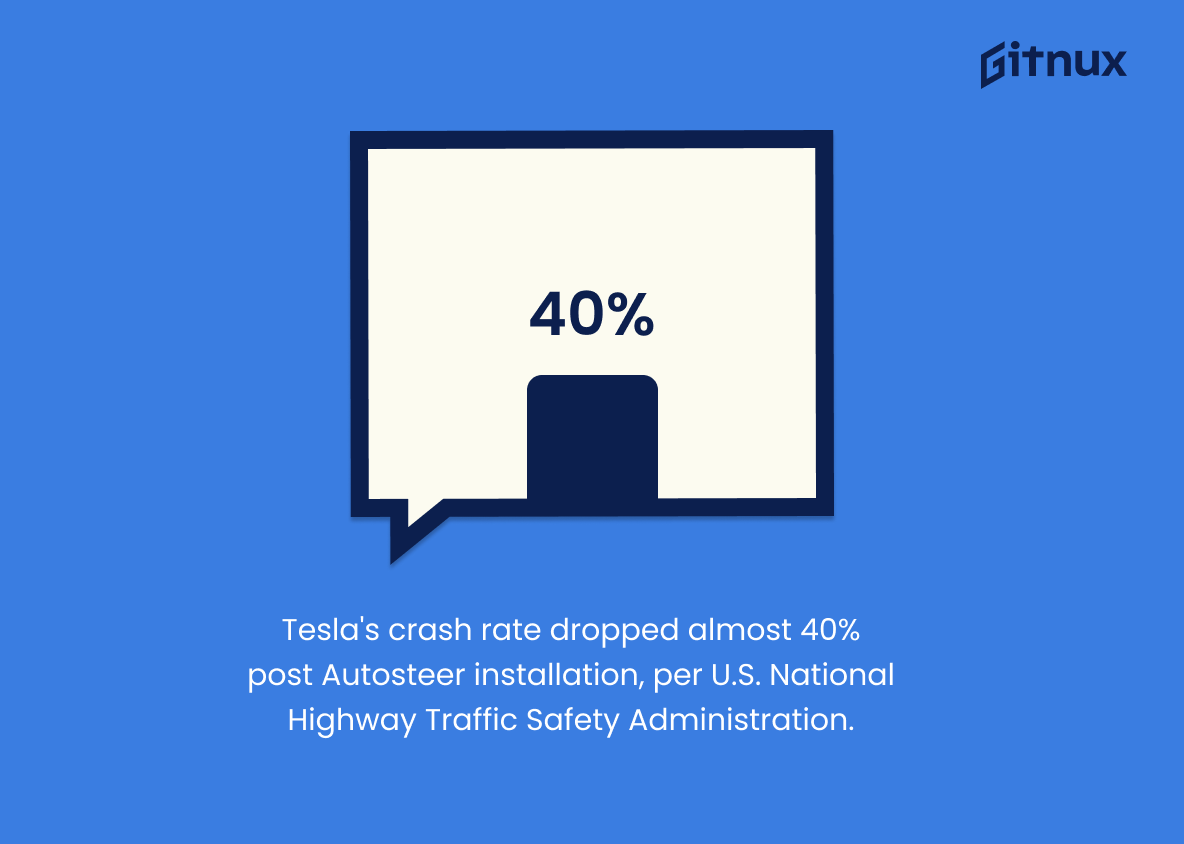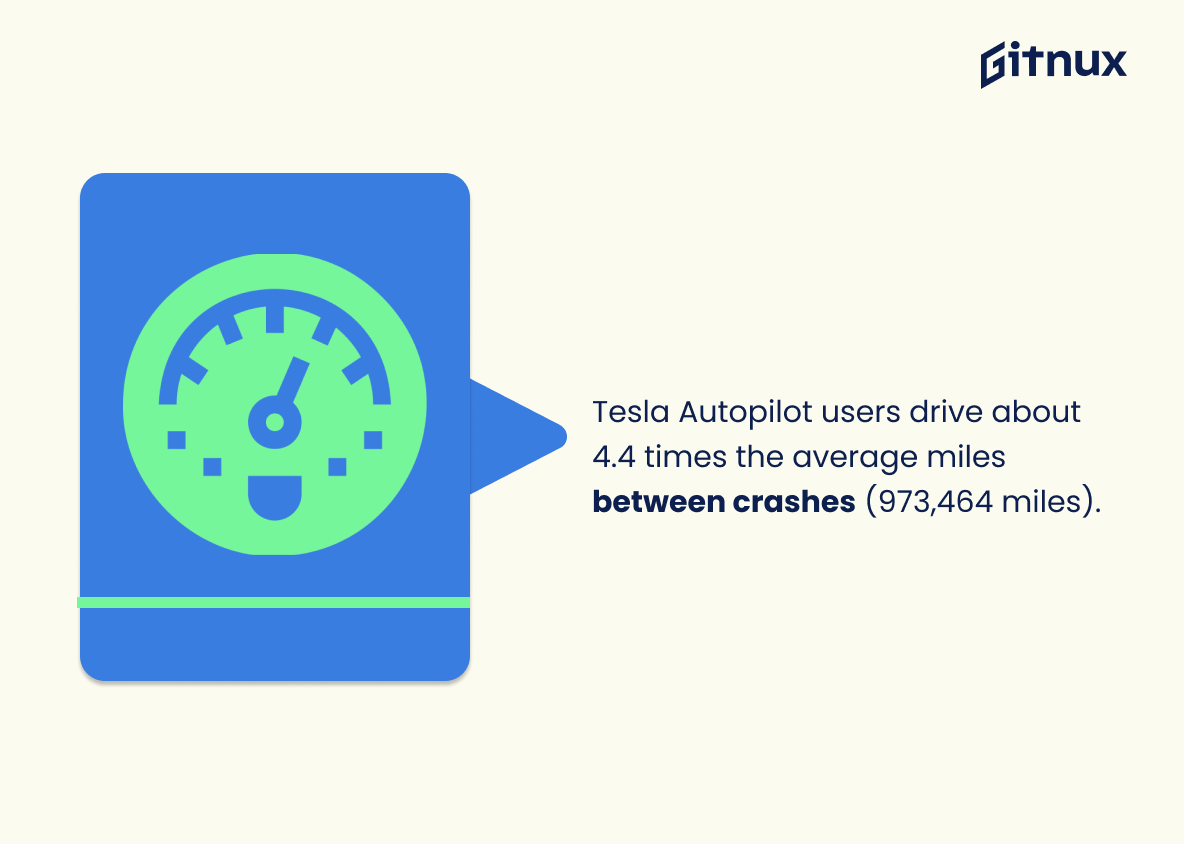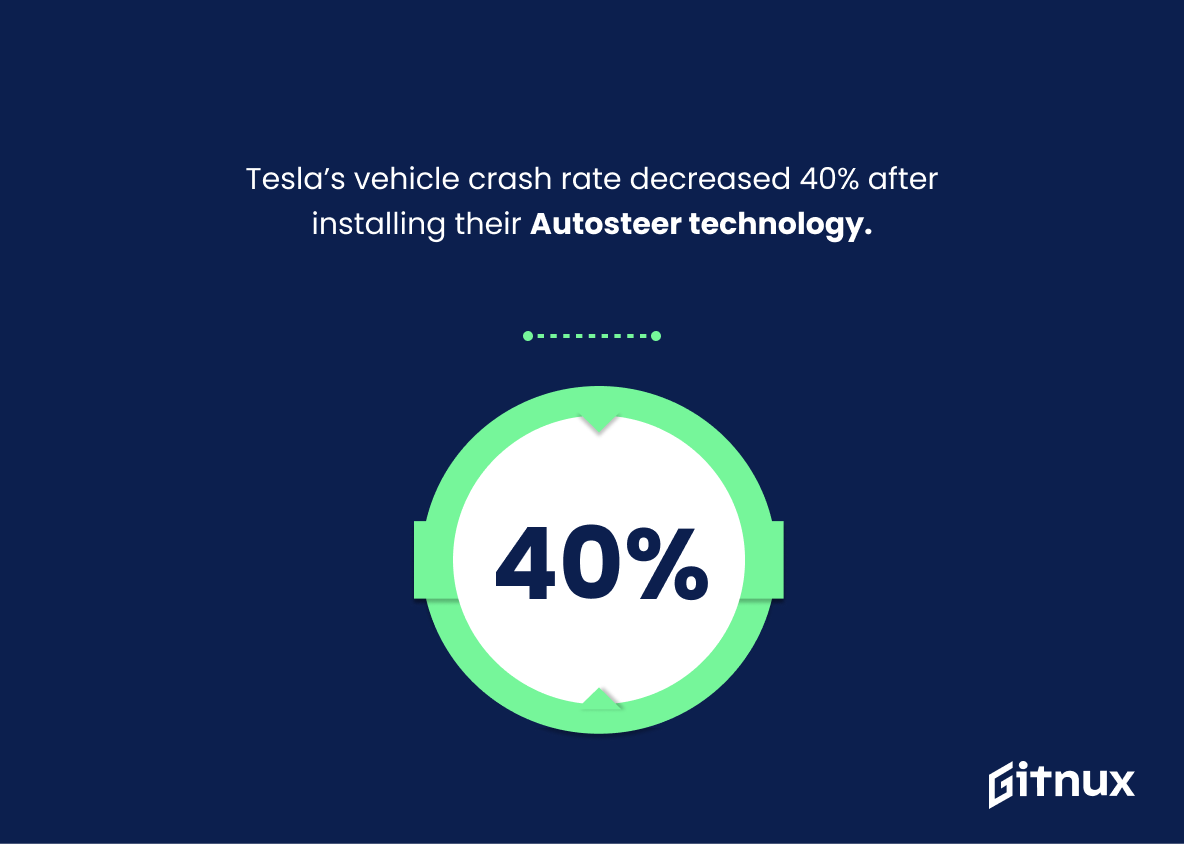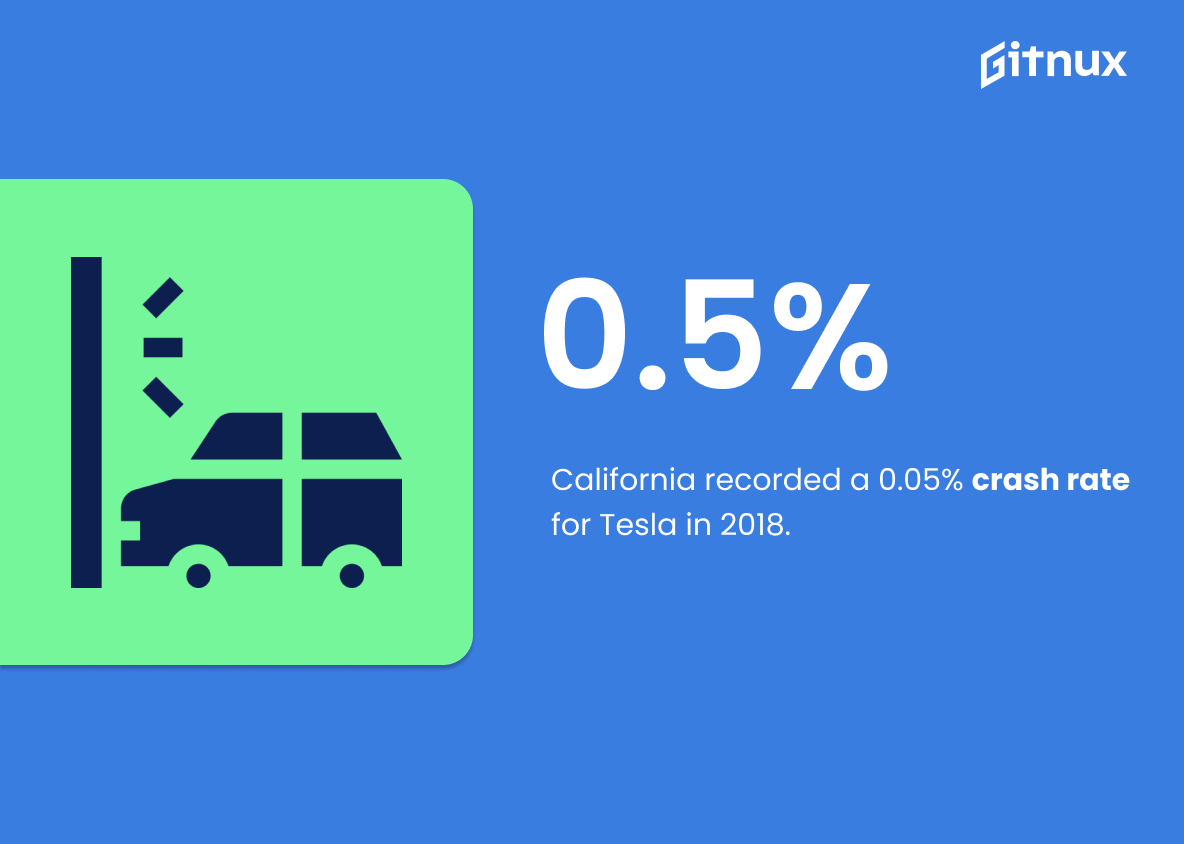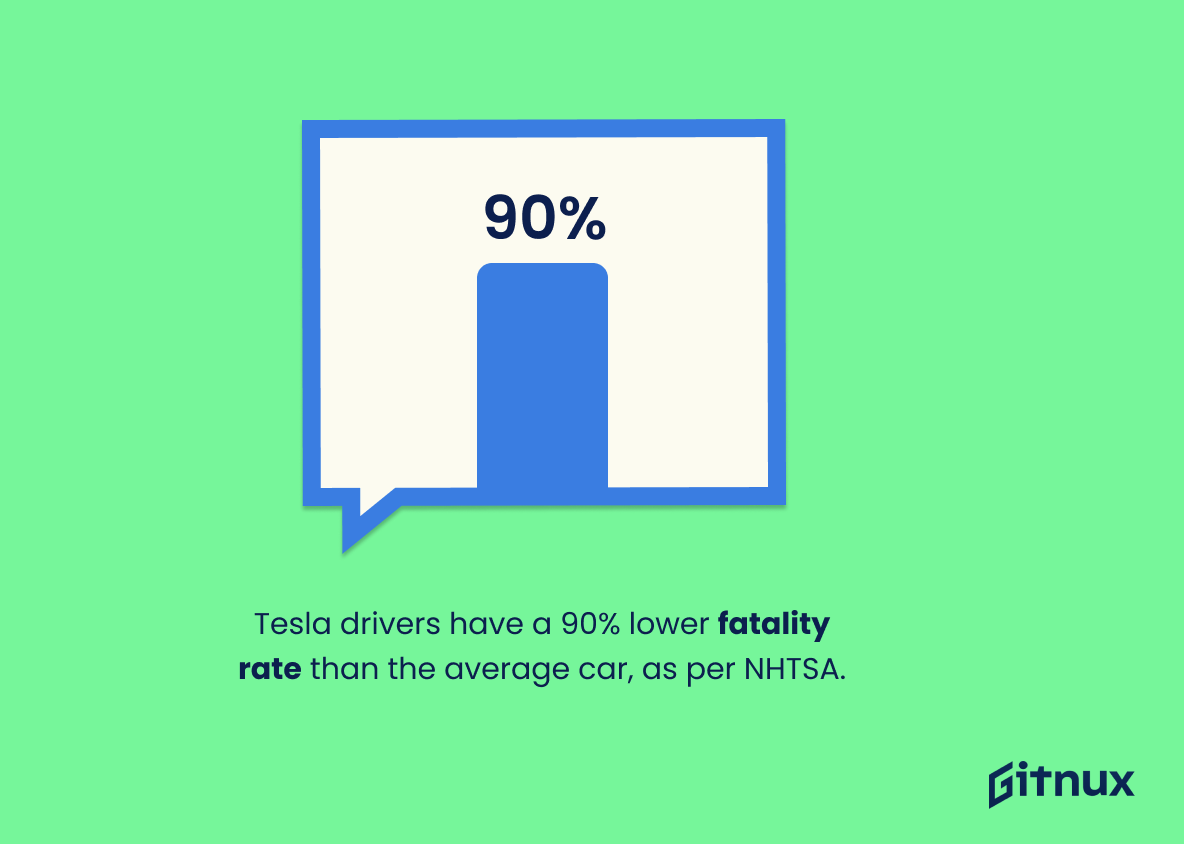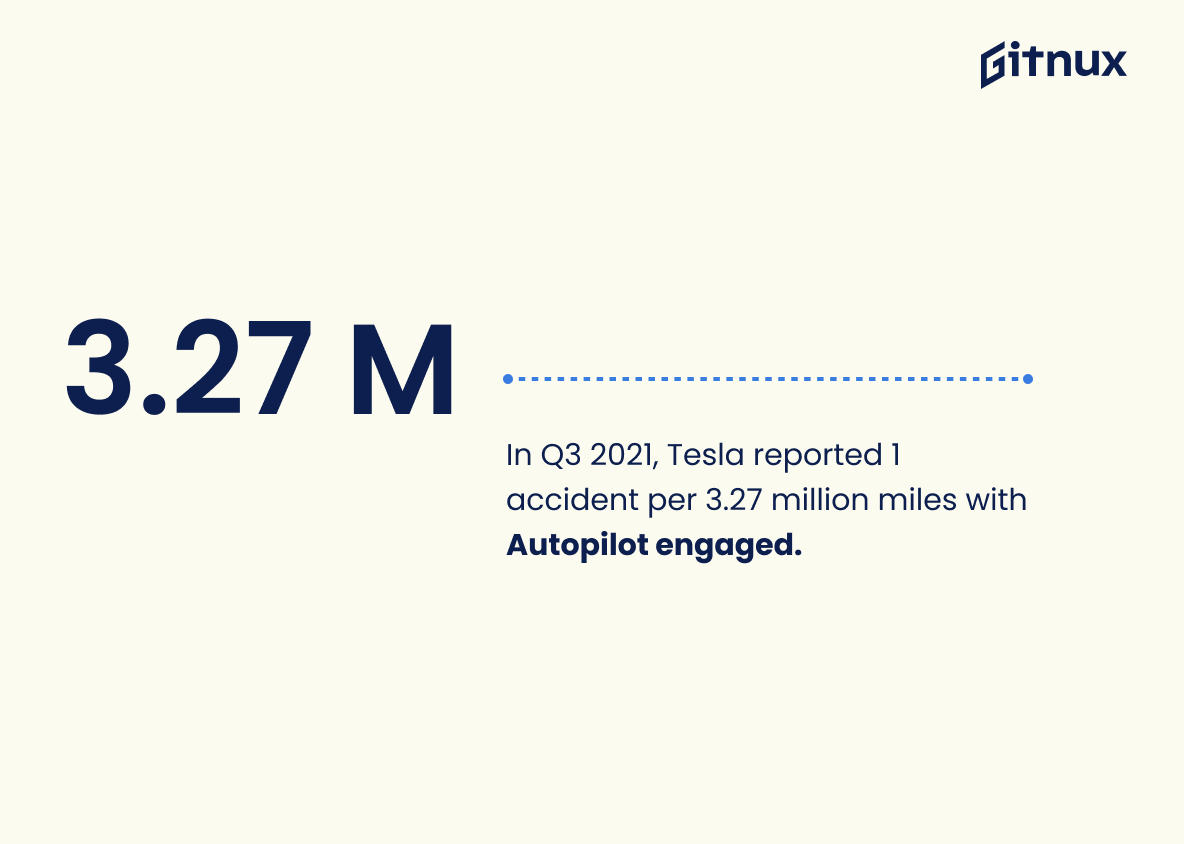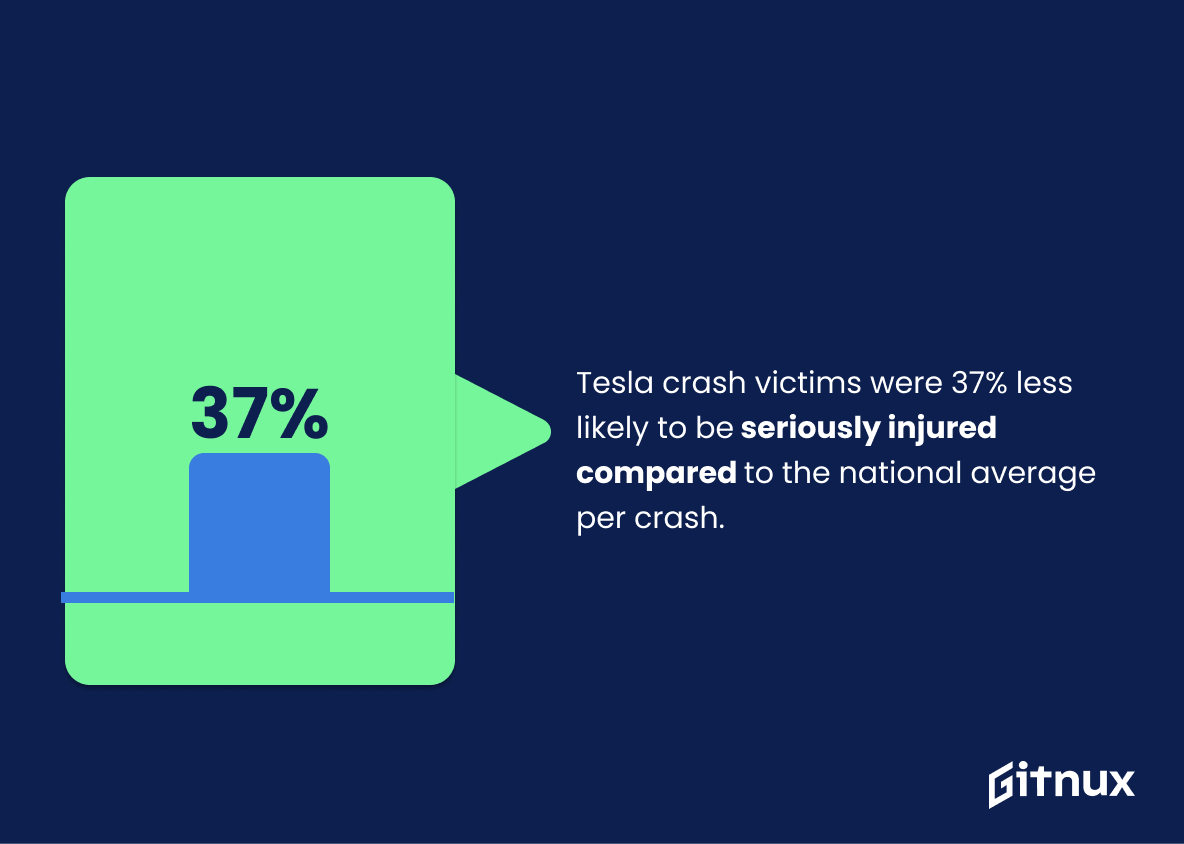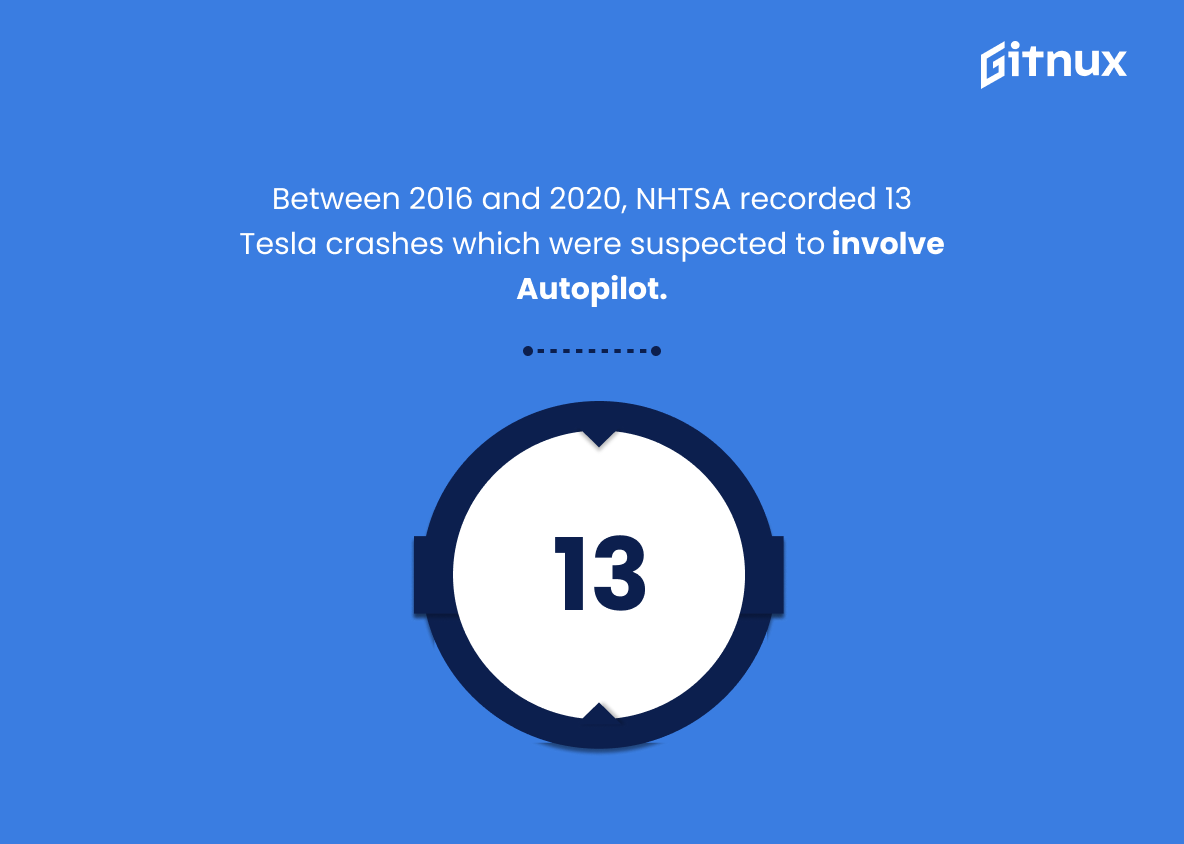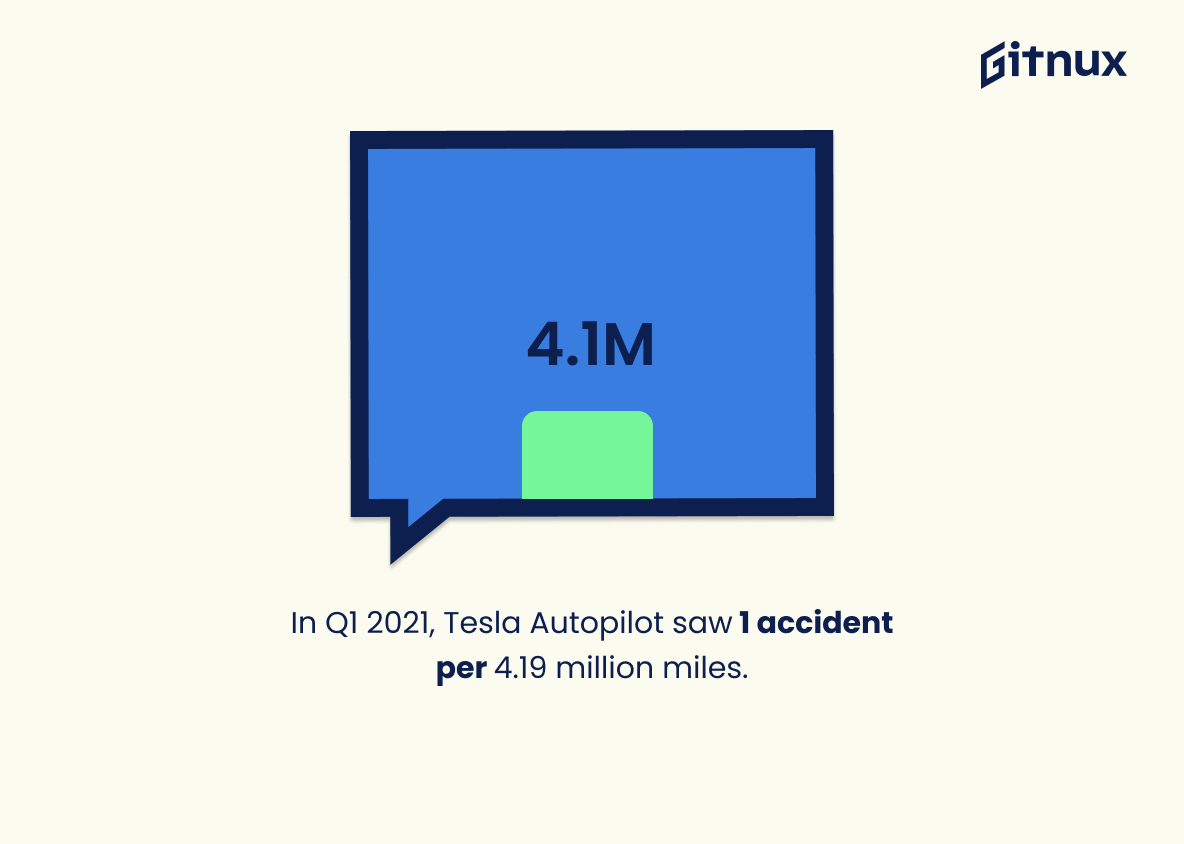In an era rapidly accelerating towards autonomous driving, Tesla stands at the forefront. With its sophisticated tech and self-driving modes, Tesla has redefined the landscape of the automotive industry. But as with any forerunners of technology, questions surrounding its safety records have been in constant discussion. In this enlightening blog post, we dive deep into Tesla crash statistics, separating fact from fear and providing an unbiased perspective to help you understand the full picture of Tesla’s safety performance. From the overall number of accidents to the incidents involving autopilot mode, you’ll learn how Tesla compares to traditional vehicles on the road. Keep reading to take a comprehensive journey into the world of Tesla crash statistics.
The Latest Tesla Crash Statistics Unveiled
Nearly 1 in every 3,500 Tesla Model S sedans was involved in a fatal crash.
In analyzing the safety landscape of Tesla Model S sedans, it’s crucial to spotlight that nearly every 3,500th Tesla Model S has been involved in a tragic, fatal crash. This metric punctuates the debate, serving as an impetus for further investigation into Tesla’s safety features. It contributes significantly to not only a comprehensive understanding of Tesla’s safety framework, but also vehicles’ collision and safety dynamics in general. Injecting an essential sense of perspective to the discourse, this statistic is both a measure and a reminder of the substantial risks involved when technology marries mobility. It immerses the readers in the grander picture of safety, survival rates, and technology’s impact on vehicle security. Thereby, whether a potential buyer, an enthusiast, or a critic, this uncensored revelation raises both eyebrows and questions about the safety quotient of Tesla Model S sedans, casting light on the urgent need for more in-depth discussions and potential improvements.
Tesla’s crash rate dropped almost 40% after Autosteer installation, according to the U.S. National Highway Traffic Safety Administration.
Delving into Tesla’s safety metrics, an astounding revelation emerges – the implementation of Autosteer resulted in a nearly 40% plunge in the occurrence of crashes, as per the records of the U.S. National Highway Traffic Safety Administration. This powerful piece of evidence plays a phenomenal role in laying out Tesla’s commitment to enhancing safety. It provides tangible proof of the effectiveness of Autosteer technology in mitigating vehicular accidents, making a compelling case for autonomous driving. Such information isn’t just numbers on a page – it’s a testament to a promising future where roads are safer and incidents are a rarity. It’s on this bedrock of statistical reality that the brilliance of Tesla’s Autosteer shines, demonstrating the tangible power of technology to save lives.
The company reported one accident per 2.19 million miles driven without Autopilot activated.
Digging into the depth of Tesla’s crash data, an intriguing figure floats up – one accident reported for every 2.19 million miles driven without Autopilot. A seemingly ordinary figure, yet it weaves an intricate tale about safety on the road. Juxtaposing this fact against the backdrop of typical automobile crash statistics reveals the sheer potential of Tesla’s cutting-edge Autopilot technology. These numbers illuminate a benchmark, a comparative bar, for how traditionally driven vehicles fare in road safety measures. Only by measuring the performance of untreated experiences — miles driven without Autopilot — can the safety capabilities of the technology truly shine. Thus, as the gears of conversation turn towards the road safety enhancements ushered in by Tesla, this figure assumes a pivotal role, driving home a hard-hitting narrative about the revolutionary Autopilot technology in reducing traffic accidents.
Of the 973,464 average miles between crashes for Tesla vehicles, drivers using Autopilot features average nearly 4.4 times that distance.
Highlighting the significant mileage difference between crashes for Tesla vehicles using Autopilot versus those not using it provides persuasive evidence of the safety benefits of Tesla’s sophisticated Autonomous Driving (AD) system. In the sea of numbers that constitute crash statistics, this comparison emerges like a beacon, showing how Tesla’s AD software can substantially enhance driver safety and potentially revolutionize our understanding of safe driving.
Crunching the numbers further, if the average crash happens after 973,464 miles for conventional driving, Autopilot ups the ante to over 4 million miles between accidents. This compelling statistic is a potent testament to the adeptness of Tesla’s Autopilot in minimizing accidents, thereby providing drivers with an additional layer of safety. Ultimately, it paints a promising picture of Tesla’s commitment to advancing the future of autonomous driving while prioritizing driver safety, sure to electrify any discussion around Tesla’s crash statistics.
Tesla’s vehicle crash rate decreased 40% after installing their Autosteer technology.
Highlighting the statistic of a 40% decrease in Tesla’s vehicle crash rate post-Autosteer installation, paints a compelling picture of the transformative potential of automobile technology. In a blog post dissecting Tesla Crash Statistics, it becomes a pivotal point, underscoring the company’s commitment to improving road safety, and demonstrating the often game-changing impact of their tech innovations, in this case, Autosteer technology. This leap in safety lends itself as a compelling argument for the wider adoption of similar technologies, potentially revolutionizing not just the automobile industry, but also the landscape of road safety in the years to come.
California recorded a 0.05% crash rate for Tesla in 2018.
Spotlighting California’s 0.05% crash rate for Tesla in 2018 offers readers a gauge to measure the safety performance of Tesla vehicles within a specific geography and timeframe. The information serves as a mental comparison chart, enabling readers to recognize real-world implications of the figures through the lens of relative safety. This specific data point helps paint a multi-pixel image on the vast canvas of Tesla accident statistics. It underscores the telling reality that despite the high-tech automation, Tesla vehicles, like other cars, are not completely immune to accidents. Yet, the low percentage could be perceived as an endorsement of Tesla’s safety claims, giving enthusiasts, investors, and the curious public a valuable nugget to chew on while navigating the broader conversation around Tesla crash statistics.
Tesla drivers are 90% less likely to be involved in fatal accidents than an average car on the road according to NHTSA.
Drawing upon the statistic that Tesla drivers are 90% less likely to engage in fatal accidents than the average car, it casts a vivid illustration of Tesla’s proficiency in creating safer vehicles. Against the backdrop of grave concerns for road safety, these figures act as a beacon of hope. They infuse faith in Tesla’s reputed Autopilot features, validating their efficiency and contributing to an overarching narrative of elevated survivability. In the labyrinth of crash statistics, such figures stand as compelling evidence of the impressive safety standards Tesla vehicles offer. In a nutshell, this hallmark statistic illuminates an influential argument in favor of Tesla’s pioneering stance in vehicle safety, creating an indelible impact on the discussion of Tesla crash statistics within a blog post.
During the Q3 of 2021, Tesla reported that there was one accident for every 3.27 million miles driven in which drivers had Autopilot engaged.
Indulge me in a journey of statistics starring the innovative entity that is Tesla. Picture this: the company has experienced one traffic incident for every 3.27 million miles drones with Autopilot activated during Q3 of 2021. Remarkable, isn’t it? This data nugget provides a wealth of knowledge in assessing the overall safety of Tesla vehicles.
Firstly, it offers a fresh vantage point on the efficacy of Tesla’s Autopilot feature. It emphasizes the impressively long distance these vehicles can navigate autonomously, maintaining safety before the occurrence of an unfortunate accident.
Secondly, one can use this statistical declaration as a checkpoint for comparison when analyzing Autopilot’s performance over time or vis-a-vis other autonomous driving technologies in the market.
Lastly, it delivers a powerful and quantifiable argument for safety—which is a contentious issue surrounding autonomous vehicles, thus giving Tesla’s current and potential customers, as well as stakeholders a crystal-clear insight into how statistical analysis contributes to their understanding of Tesla vehicular safety.
That’s the beauty and the power of numbers. They paint a picture, tell a story, and in this case, they’re behind the wheel of an Autopilot Tesla, journeying over 3.27 million miles before a minor scratch appears. This story of resilience underlines the vital role of statistics in the narrative about Tesla’s crash statistics. Just remember, every mile counts.
Tesla crash victims were 37% less likely to be seriously injured compared to the national average per crash.
Delving into the world of Tesla crash statistics, one begins to discern the impressive safety features inherent in Tesla vehicles. A particularly intriguing finding is the fact that those at the helm of a Tesla find themselves 37% less likely to incur serious injury during a mishap, a figure that starkly undercuts the national average. This data nugget sheds light on the company’s relentless endeavor to design vehicles with stringent safety measures. It also soothes potential concerns of safety skeptics, underlining why Tesla’s vehicles stand tall in automatic safety tests. Therefore, this raw figure undoubtedly imbues confidence in the Tesla brand and could serve as a vital linchpin for potential buyers prioritizing safety.
Between 2016 and 2020, NHTSA recorded 13 Tesla crashes which were suspected to involve Autopilot.
Delving into the heart of Tesla crash statistics, the revelation that NHTSA recorded 13 Tesla crashes suspected to involve Autopilot between 2016 and 2020 paints a stark portrait. This figure underlines the fact that while autonomous technologies like Tesla’s Autopilot promise revolutionary changes in safety and driving experience, they’re not without potential pitfalls. Furthermore, this nugget of information can serve as a launchpad for a broader conversation about the role advanced driver-assistance systems play in road safety, inviting perspectives on the need for refined regulations, the driver’s role in a semi-autonomous vehicle, and the extent to which technology can—and should—replace human control.
8 Tesla drivers died in crashes while using Autopilot between 2015 and 2019.
Dancing in the shadows of raw data, the statistic – ‘8 Tesla drivers expired in accidents while engaging Autopilot from 2015 to 2019,’ emerges as a poignant melody in the symphony of our analysis on Tesla Crash Statistics. This particular chord strikes a note of immense importance as it mirrors the potentially fatal consequences of driver-assist technology, despite its intention to enhance safety and convenience. It not only brews a concoction of questions about the efficacy of Tesla’s Autopilot system, but also demands a deep reflection on the larger narrative of autonomous vehicles and their real-world implications. This statistic, therefore, is a poignant hue that colors our understanding of Tesla’s safety framework, nudges us to contemplate upon the collision specificity, and challenges us to reexamine the dialogue around automated vehicle technology.
In just Q1 2021, Tesla vehicles with the autopilot engaged were involved in one reported accident per 4.19 million miles driven.
Peeling back the layers of the Q1 2021 statistic reveals the significant strides Tesla’s autopilot technology has made. This substantial figure, one reported accident for every 4.19 million miles driven, sharpens our perspective on the efficacy and safety of Tesla’s autonomous system. It provides a lens through which readers can observe the transformation occurring within the vehicle industry, particularly in relation to the decreasing frequency of accidents due to advancements in safety features. Incidentally, it delivers a hopeful forecast for the future where automated driving could potentially outstrip conventional, human-controlled vehicles in terms of safety. Ultimately, the statistic serves as an unmistakable highlight in a tapestry of data, establishing a compelling argument for the increasing reliability of Tesla’s autopilot function.
In the 4th quarter of 2020, Tesla reported one accident for every 3.09 million miles driven when the autopilot was engaged.
Dive headlong into this momentous revelation: In the 4th quarter of 2020, Tesla reported just one accident for every 3.09 million miles driven with the autopilot activated. Landmark figures such as these serve as powerful ammunition in the arsenal of testimonials showcasing Tesla’s ongoing commitment to safety. They highlight the extraordinary strides the company has made in revolutionizing automobile safety through their groundbreaking autopilot technology. For the discerning reader immersed in a blog post about Tesla Crash Statistics, this nugget of information offers indisputable evidence of Tesla’s laudable safety record, propelling the conversation forward about the potential of autonomous vehicles to dramatically reduce road accidents. This finding, plucked from a sea of statistics, illuminates Tesla’s journey towards creating a safer transportation facet, seeded in the power of advanced technology.
Conclusion
In summary, Tesla vehicles have significantly transformed the automotive industry, boasting remarkable safety features and lower accident rates compared to the average automobile. Tesla’s proactive approach to safety, combined with advanced Autopilot technology, has consistently produced promising crash statistics. The numbers show a positive trend, but it is also essential for drivers to utilize these systems responsibly and stay vigilant on the road. Though no vehicle can guarantee absolute safety, Tesla’s design philosophy that centers on safety and its continuous enhancements bring us a step closer to a future where road accidents are significantly decreased. To stay updated on Tesla crash statistics and innovations in car safety features, keep an eye on this space.
References
0. – https://www.www.tesla.com
1. – https://www.www.iihs.org
2. – https://www.www.consumerreports.org
3. – https://www.cleantechnica.com
4. – https://www.www.cnbc.com
5. – https://www.www.forbes.com
6. – https://www.hometownstation.com
7. – https://www.electrek.co
8. – https://www.www.consumeraffairs.com
9. – https://www.www.greencarreports.com
10. – https://www.www.reuters.com
